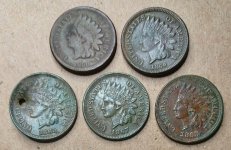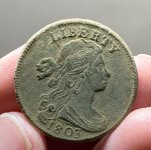J
Jake4545
Guest
GPR works well as does Magnetometers. Ground Penetrating Radar (GPR) is an ultra-wideband imaging technique used for subsurface exploration and monitoring. It is widely used for locating utility lines; monitoring pavement, runways, and walls for soundness and thickness; search and rescue; archaeological exploration; forensic examinations; mining; ice sounding; detecting unexploded land mines and bombs; agricultural applications; groundwater studies; permafrost, void, cave and tunnel detection; location of sinkholes, karst, subsidence areas; and many other similar applications.
The beauty of GPR is that it is non-invasive, relatively inexpensive, and can be used in a variety of ways -- there are hand-held units, downhole units, units that can be dragged behind vehicles, and even used from aircraft and satellite. It has the highest resolution of any subsurface imaging method (sometimes with resolutions of one centimeter), and is far safer than x-ray technology.
The Rover Deluxe a GPR and Magnetometer mix is based on electro-magnetic impulse technology, attached with a discrimination disk that is capable of discriminating different metals like Gold, Silver, Steel and Iron. In this way the equipment is capable of recognizing many different subsurface structures. In addition to other things natural occurrences such as soil layers, ground-water level, cavities, burial places or buried objects such as pipes, tanks, crates and more. The Rover Deluxe has a built-in magnetometer, which can penetrate up to 2m in favorable ground conditions on larger targets, a Scan function which can detect objects up to depths of 18m. With the integrated frequency discriminator, use in strongly mineralized soils is possible. In order to recognize concrete forms, the user must proceed with an exact grid pattern. The main advantage of the equipment, is that it is particularly well suited for use in very uneven areas. Soil recognition, approximate depth measurement and data storage are accomplished by the microprocessor-controlled system automatically. The evaluation takes place comfortably at the computer, where the scanned area is displayed and the proper soil type is intered that gives a three-dimensional image which can be analyzed.
I have one and it works well.


 some says its only an EM. We have one here in Phils. and the discriminator is practically not functioning they way the manual says...here is what we did. First we do the soil reconciliation as mentioned in the manual...we set the discriminator knob to 5 ( gold, silver, bronze and aluminum) . We have a sample of aluminum sheet 1`\sqfoot in size and the ground and a ferrous metal (rusted iron). we pass over the disk 2 inches above the Al....it reacted ( there is a acoustic sound)..then the ground no reaction ( no sound) and then the ferrous metal it reacted ( there is sound)..why does it reacted on the ferrous metal
some says its only an EM. We have one here in Phils. and the discriminator is practically not functioning they way the manual says...here is what we did. First we do the soil reconciliation as mentioned in the manual...we set the discriminator knob to 5 ( gold, silver, bronze and aluminum) . We have a sample of aluminum sheet 1`\sqfoot in size and the ground and a ferrous metal (rusted iron). we pass over the disk 2 inches above the Al....it reacted ( there is a acoustic sound)..then the ground no reaction ( no sound) and then the ferrous metal it reacted ( there is sound)..why does it reacted on the ferrous metal Type "arc geo logger" in a search engine and you should be able to find out all about it.
Type "arc geo logger" in a search engine and you should be able to find out all about it.




